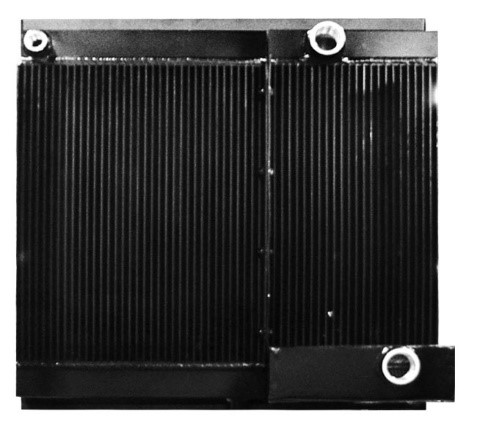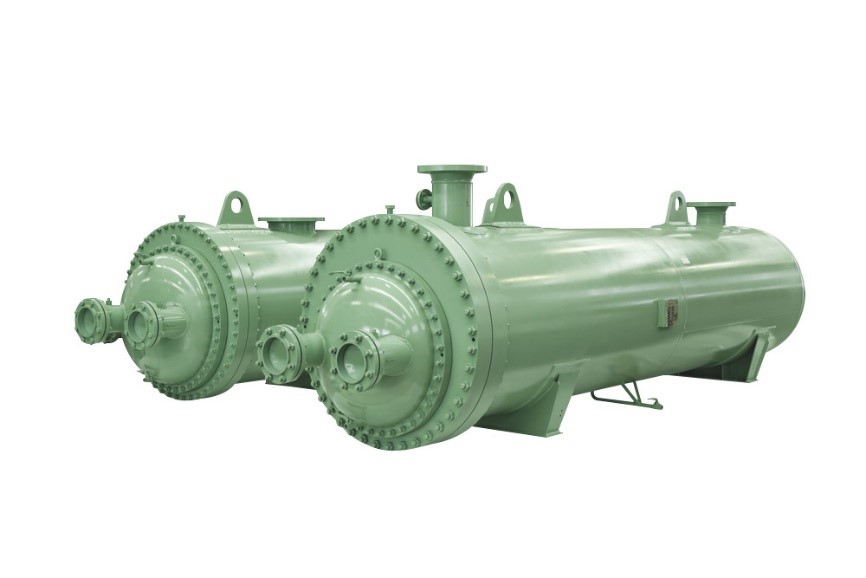
Do you enjoy that rusty, lubricant and scale laden shower every time you use compressed air? Maybe your pneumatic tools don’t last very long and you have the opportunity to shop for new ones on a regular basis. Perhaps the fine particulate filters on sophisticated process and test equipment foul with irritating frequency. What is a likely common cause of these issues? Water in your compressed air system. Water that was not removed where it should have been, so you are dealing with it downstream.
Where should water be removed from the compressed air system? From the compressor aftercooler, moisture separator and drain. In fact, 75% of the water vapor ingested by the compressor should be removed by the air compressor’s aftercooler, water separator and drain. This makes them vital components in the process to achieving high quality compressed air. If these components are not sized and working properly, the saturated compressed air will overload the cleanup filtration and dryer, resulting in water downstream in critical processes requiring clean dry air.

There are two types of aftercoolers with a rotary screw air compressor: water-cooled and air-cooled. The most common cooler used is an externally finned air-cooled aftercooler. Although they are commonly used, they are most susceptible to high ambient conditions. This is why it is important to place them in compressor rooms that can maintain a desired ambient condition of 85° F. A properly sized aftercooler will cool the air to within 20° F of ambient air, but remember the discharge temperature of the compressed air is higher than ambient. For example, if your compressor room is 85° F the aftercooler discharge temperature will be 105° F.
Air-cooled aftercoolers need to be properly maintained. Ensure the compressor room has proper ventilation to keep the compressor room cool. Often duct work is required to pull cooler and clean air from outside. If there is dirty or dusty air, the aftercooler’s fins will become coated or caked with dirt and dust entrained in ambient air. This reduces the effectiveness of the available surface, or even causes it to act as an insulator. A properly maintained cooler should last 10 to 15 years. With a poorly maintained cooler, expect a much shorter lifespan.
A water-cooled aftercooler is a shell and tube heat exchanger used primarily in hot ambient environments where proper ventilation cannot be achieved. The water-cooled aftercooler will use cooling water to lower the compressed air discharge temperature to within 10 – 25° F above the inlet water temperature. For example, if the water temperature is 60° F, the air discharge temperature will be 85° F.

Sources for cooling water can include cooling towers, chilled water, city water or river water. Depending on the level of contaminants in the water, coolers may require cleaning. It is important to take a water sample before installing water-cooled air compressors to make sure the water is compatible with the types of coolers. For instance, coolers made from stainless steel will degrade very quickly if there are high amounts of chlorine being used to treat the water.
Determining whether to use water-cooled or air-cooled, cooling is an important step – and perhaps the most important step – toward ensuring high quality compressed air. Be sure to consult with a compressed air professional to evaluate the application of water-cooled and air-cooled, as well as your water quality and overall system.
Use the checkboxes to select the types of cookies you want to accept, then press the “Save Settings” button. View our Privacy Policy.